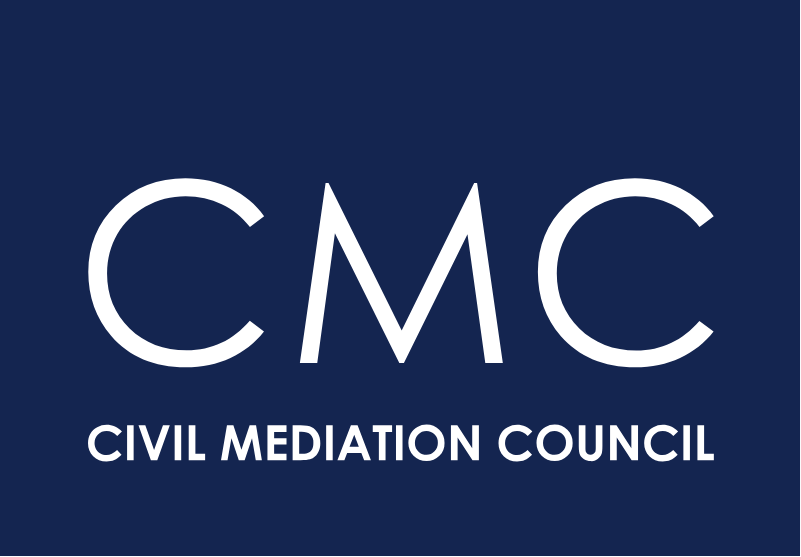Mediation’s Therapeutic Role in Health and Care Disputes
Can Mediation Be a Mechanism for Delivering Therapeutic Benefits in Health and Care Disputes?
When disagreements arise over health and care decisions, mediation is often seen as a way to ease tensions and find common ground. But can it also support the emotional wellbeing of those involved? This blog explores new research that sheds light on the potential and the challenges of using mediation to deliver therapeutic benefits in these sensitive disputes.
New research on resolving health and care disputes explores whether, and if so how, mediation can contribute to therapeutic benefits for participants. The study, funded by the Economic and Social Research Council and led by Dr Jaime Lindsey, Associate Professor of Law at the University of Reading, considered the synergies between mediation and therapeutic justice. [1] Here we report on some of the research findings that shone a light on mediator techniques, and we examine the challenges in researching mediation.
The project looked at disagreements between health care professionals (HCPs) and a patient and/or the patient’s family about health and care provision. The issues are varied and include withdrawal of life-sustaining treatment for critically ill adults and children, refusals of treatment, complaints about past care, and ongoing health and care issues in residential, community and hospital settings. A key element of the research involved exploring participants’ experiences through interviews and observations of mediations. In this way the project offers a unique insight into how people experience mediation in these emotionally sensitive disputes. The researchers also carried out doctrinal and empirical analysis of case law to support these findings. [2]
The concept of therapeutic justice emerged from mental health courts and problem-solving criminal justice courts in the USA in the 1970s. It focuses on parties’ emotional and psychological wellbeing rather than other aspects of justice processes, and its definition of ‘therapeutic’ is deliberately left vague to account for individual circumstances and needs. In many ways it has overlaps with procedural justice, but it requires a commitment to exploring how legal processes make people feel and impacts their lives. It has many synergies with mediation, particularly mediation practised in a facilitative or transformative mode, which prioritises participant voice and aims to improve understanding between the parties. [3] For the research, we identified key features of therapeutic justice that mediation should promote to enhance participant wellbeing: it should be flexible, participatory, collaborative, less adversarial, voluntary, and enhance communication and understanding.

Mediator Technique and Therapeutic Justice
Both mediators and the mediation process can contribute to an environment in which participants experience therapeutic benefits. Among the benefits we identified in the research were improved understanding of the positions of each party, an important outcome in itself when a dispute features medical opinion and terminology. There was evidence of mediators sense-checking how the parties were feeling and ensuring that every participant understood what had been said. Mediations were participatory where mediators emphasised the importance of creating a space in which each party has their voice heard and their experience acknowledged. There were also examples of mediator techniques for fostering collaboration among the parties, treating them as expert ‘co-designers’ of resolutions, such as the use of post-it notes and a flipchart to share ideas openly. Mediators provided a flexible process that responded to the parties’ needs in terms of pace and timing, and a widely held view is that these mediations are not ‘one and done’ but might involve a series of meetings over a space of time.
Mediators also facilitated collaboration by ensuring a level playing field between the parties. Techniques included using neutral venues and using first names for all participants. We also saw evidence of non-neutral venues being used, such as one party’s solicitors’ offices or a hospital where the patient was treated. Often this was the most pragmatic option of venue, and it does not necessarily lead to anti-therapeutic benefits, but in disputes between health professionals and family members, and in those where one party is legally represented and another is not, there is potential for a power imbalance that affects participants’ wellbeing.
Evidence of mediation being less adversarial included mediators taking a problem-solving approach focused on co-operation rather than opposition. One mediator explained that success is not dependent on a resolution but on whether the parties are able to have a different quality of conversation and ‘see each other as humans’. Similarly, we have evidence of mediation improving the way parties communicate and understand each other. Clearing up misunderstandings was an important aspect of this; participants shared examples of mediators helping parties break down their points or getting parties to clarify what they mean. One mediator spoke of ‘playing Columbo’ – asking for clarification of a clinical term for the benefit of the family members. Another described helping the parties to piece a jigsaw together or to unpick a complicated strand of technical information.

Patient participation in the mediations in our research was limited, and therefore we do not have evidence of direct impacts on patient wellbeing and are unable to say that mediation was therapeutic for patients. However, we did identify an indirect therapeutic benefit to the patient where mediation improved the relationships between the parties involved in the patient’s care.
Mediation techniques can also be anti-therapeutic. Consider, for example, the importance of self-determination in the mediation process. It is one of the cornerstones of mediation – that parties determine the outcome rather than seeking a decision from a third party. Yet in the context of health and care disputes, such as a case involving a decision to withdraw life-sustaining treatment for a seriously ill child, an emphasis on self-determination could be anti-therapeutic for family members who consider their role is to fight for their child. We identified that process coercion could be anti-therapeutic when it led to participants feeling pressured to engage in mediation. For example, some HCPs saw mediation as a tick-box exercise required by the courts.
Challenges in Researching Mediation
Conducting empirical research on mediation presents several challenges, primarily in accessing information on mediations that have taken place and those who participated in them. Among the obstacles we faced as researchers were:
• Mediation is underreported in court judgments and is not always mentioned even when it has been attempted. Depending on the stage of the proceedings, if a dispute is resolved in mediation this is not always recorded by the court.
• Those facilitating researchers’ access to mediations often have anxiety about inviting participants to take part in research, especially where the issues are sensitive and emotionally charged. We found, however, that those participants who engaged in the research were eager to discuss their experiences and share their views.
• Participants can be confused as to whether they have engaged in mediation, with some describing in-house meetings (where the ‘mediator’ was not independent) or roundtable meetings as ‘mediation’.
• Mediation providers do not routinely publish summaries of mediated cases, making it difficult to understand how mediation can contribute to resolution of these disputes and what outcomes result. Mediators themselves can be reluctant to share details of their mediated cases, even in anonymised form.
The most obvious reason for the lack of information in the public domain is the confidentiality of the process. Confidentiality, usually described as one of mediation’s key features, is important in creating a space for open and honest discussion. Yet there is an inherent problem with confidentiality of mediation in cases where there is a public interest in holding public bodies to account. Although mediation discussions must remain confidential (aside from the exceptions outlined in mediation codes of conduct), confidentiality need not, and arguably should not, apply to other aspects of the mediation when public bodies are concerned. These other aspects include the fact that the mediation has taken place and the outcome of the mediation, particularly actions agreed by the public body, such as an NHS Trust or a local authority.

We have evidence of participants seeking outcomes to improve practice or communication and that have a potentially wider benefit for other patients and families. The actions agreed by a Trust or local authority in a health or care dispute might require sharing information within the public body or with the wider patient public, or they might be ones that require public consultation, such as a change to a policy. For public bodies, there is potential benefit in sharing information on mediation outcomes; it can, for exmaple, demonstrate that they are open to collaborative ways of resolving disputes and to systemic change. Potential benefits to the wider public include a better understanding of how mediation can be used in medical treatment disputes, and what mediation can, and cannot, achieve. One mediator noted that a rigid approach to confidentiality ‘does make it difficult to for us to to tell the tale’ of mediation: ‘we can’t really tell convincingly real-life stories about mediation other than with very careful circumspection’.
We identified some situations where interviewees were unsure whether or not they had taken part in a mediation, suggesting that unfamiliarity with the process can lead to blurring of lines between in-house processes such as roundtable meetings or local resolution and independently facilitated mediation. Having more information in the public domain about actual mediations that have taken place can help address such misconceptions. As part of this research we have produced a short film about mediation including two extracts from fictional case studies.
There are ways in which the concerns can be mitigated while greater transparency is promoted – for example, through providing accessible and anonymised summaries and/or requiring courts to include in the reported judgment where a case was previously mediated. At a minimum, a public body should be required to keep a record of the mediation having taken place and whether it resolved the issue or proceeded to court. Mediators could also be under an obligation to seek agreement at the start that the fact of the mediation taking place can be shared and an anonymised summary of the issues and outcome will be prepared by the mediator for agreement by the parties, which can then be used as a public statement. All mediation providers could consider adopting an approach that promotes information sharing, such as anonymised case summaries, while protecting the personal data of participants.
The research report, including details of the project methodology and our full recommendations will be released in September 2025. If you would like a copy please contact Dr Jaime Lindsey at j.lindsey@reading.ac.uk. The publication of the report follows the end-of-project conference held on 1 July at the University of Reading.
[1] See the project website at: https://research.reading.ac.uk/mediation-medical-disputes/. The aims of the project are described in more detail in an post on this blog: J Lindsey, ‘Mediating Conflict in Healthcare: A Therapeutic Justice Analysis [1] https://civilmediation.org/mediating-conflict-in-healthcare/, May 3 2023.
[2] For further analysis, see J Lindsey, M Doyle and K Wazynska-Finck, ‘Securing Therapeutic Justice Through Mediation: The Challenge of Medical Treatment Disputes’ (2025) 45 Legal Studies 1, 40; J Lindsey, D Schuberg, & J Browning, ‘Medical Treatment Disputes and Children: An Empirical Analysis of Sixteen Years of Reported Judgments in England and Wales’ (2025) 46 Journal of Social Welfare and Family Law, 4, 582. https://doi.org/10.1080/09649069.2025.2454107.
[3] For further analysis of therapeutic justice and mediation see J Lindsey, M Doyle and K Wazynska-Finck, ‘Securing Therapeutic Justice Through Mediation: The Challenge of Medical Treatment Disputes’, above note 2, pp.45-47.



